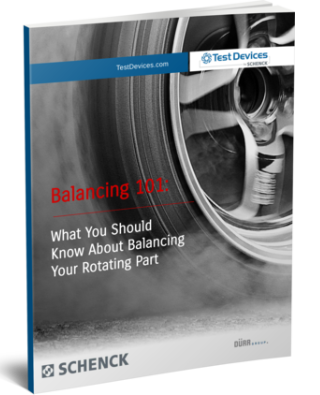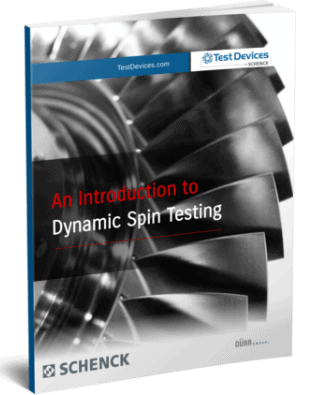Data Acquisition & Reporting
Overview
Test data are the most valuable product we provide to customers. In the case of destructive testing – where the part itself will not survive – test data may be the only information available to make decisions that affect product design, cost, reliability and safety.
At Test Devices, we know it is imperative to acquire accurate and reliable test data for every test. In short, this is why customers come to us. With this in mind, we have continually upgraded our data acquisition and reporting capabilities to provide customers with the most relevant test data in the most useful formats.
Test Devices uses digital data acquisition systems that we have designed specifically for use with spin test systems. These digital systems have replaced the strip chart recorders that were long an industry standard.
Test data recorded digitally offers important advantages over traditional paper records:
- Enables more sophisticated data collection, manipulation and analysis
- Is immediately available on digital storage media
- Is transmittable via e-mail to off-site engineers for review
- Retains accuracy in storage
- Requires less storage space
Download Our Spin Testing Ebook
Data Recorded
Test Devices provides a full line of spin test services, including proof (over-speed), burst, low cycle fatigue, high cycle fatigue, radial growth, and strain survey (instrumented) testing. Each test produces its own set of data that can be recorded. For example, routine proof and burst tests only require that speed and vibration data be recorded, while high cycle fatigue and strain survey tests require recording strain gauge data as well. Temperature (elevated or cryogenic) can be added as a data component recorded for all of these tests.
Recording Capability
Several kinds of spin tests offered at Test Devices – including low cycle fatigue, high cycle fatigue, radial growth, and strain survey – require that multiple data channels be recorded simultaneously. Test Devices’ data acquisition system is capable of recording 64 channels of data. We can monitor and record data at sample rates ranging from several readings per second for temperature signals to several thousand per second for passage of airfoils in a bladed rotor assembly.
The data acquisition system has a sample rate of 1 million samples per second and a high signal to noise ratio, producing very clean information. Test Devices can also record data with wide band tape recorders, which are useful as backup media and for replaying data recorded in analog format.
Download Our Spin Testing Ebook
Data Reduction
Post-test data processing is critical in understanding events that may have taken place in hundredths of a second. For many spin tests, particularly long duration, instrumented tests, the number of data points recorded is extremely large. Besides providing complete sets of raw data, Test Devices can also provide translation and reduction services.
Translation takes the native sensor output and converts it into the units of interest. The millivolt output of a thermocouple, for example, will be converted into temperature. Reduction puts the data into formats (time, X-Y plots, Fast Fourier Transform [FFT], zooming, spreadsheet, graphs) which summarize important events and facilitate further analysis and review by the customer. All signals are converted to engineering units and can be transferred into special units specified by the customer.
The reduction process includes filtering raw data to produce only useful and pertinent data, providing the customer with a succinct review of the test. Some data reduction is done in real time to provide the operator with pertinent information during the test, allowing for live adjustment of the test protocol.
A copy of the raw test data accompanies the reduced data in the final report, enabling the customer to analyze actual data points as desired. Additionally, test data (raw and reduced) are archived at Test Devices for future review and analysis by the customer.
What is Included in a typical test report?
- List of sensors and their locations
- Drawings (dimensioned if necessary)
- Instrumentation procedures
- Table of all connections and terminations following the path from sensor to recording and/or monitoring device
- Calibration information for all equipment provided
- Copies of NIST documentation
- Copies of signal integrity checkout sheets
- All test logs
- All data recorded on computer, provided on CD-ROM






